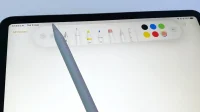While the Apple Pencil doesn’t come with any iPad model out of the box, it’s arguably the best iPad accessory you can get. It is a powerful writing and drawing tool with an intuitive and user-friendly design that makes it easy to take notes, draw sketches, mark up documents, and more. And you can do a lot with it – some of which you may not have noticed yet.
What you can do on your iPad with your Apple Pencil depends on your Apple Pencil model. The first model came out with iOS 9.1 and the first generation iPad Pro in 2015, and you need to charge it through the iPad’s Lightning port. It has a round shape and a plug at the end that covers the Lightning connector.
The more advanced Apple Pencil was released in 2018 alongside the third generation iPad Pro. It charges wirelessly, attaches magnetically to the side of any iPad with a USB-C port. Its one-piece design also features a touch button that can execute shortcuts to speed up your workflow.
iPad compatibility with Apple Pencil models
Each Apple Pencil is compatible with different iPad models, so if an iPad supports Apple Pencil (1st generation), it won’t support Apple Pencil (2nd generation), and vice versa. Basically, any iPad with USB-C supports the second generation Apple Pencil, and any iPad with a Lightning port supports the first generation Apple Pencil.
Apple Pencil (2nd generation)
- iPad mini (6th generation)
- iPad Air (4th generation and later)
- iPad Pro 11-inch (1st generation and later)
- iPad Pro 12.9″(3rd generation and later)
Apple Pencil (1st generation)
- iPad mini (5th generation)
- iPad (6th generation and later)
- iPad Air (3rd generation)
- iPad Pro 9.7 inch
- iPad Pro 10.5 inch
- iPad Pro 12.9″(1st and 2nd generation)
Tip 1: Handwriting
On iPadOS, you can use your Apple Pencil’s Scribble feature to type text into any text field on your iPad using handwriting recognition—all without having to open the on-screen keyboard. So you can write something by hand with your Apple Pencil and your iPad will automatically convert the text as if you typed it.
All text conversions are done on your iPad, so anything you write with your Apple Pencil stays private. It recognizes handwriting in English, Cantonese, Chinese, French, German, Italian, Japanese, Spanish, and Portuguese*.
Try using it to search Safari, write reminders, reply to a message, compose an email, and more. Anywhere you can type, you can handwrite with Scribble. You don’t even have to click on the field to start writing by hand – just start at the top of the text field and it will know what you’re doing. And as long as you don’t stop while inking, you can continue to write with your Apple Pencil outside of the text field.
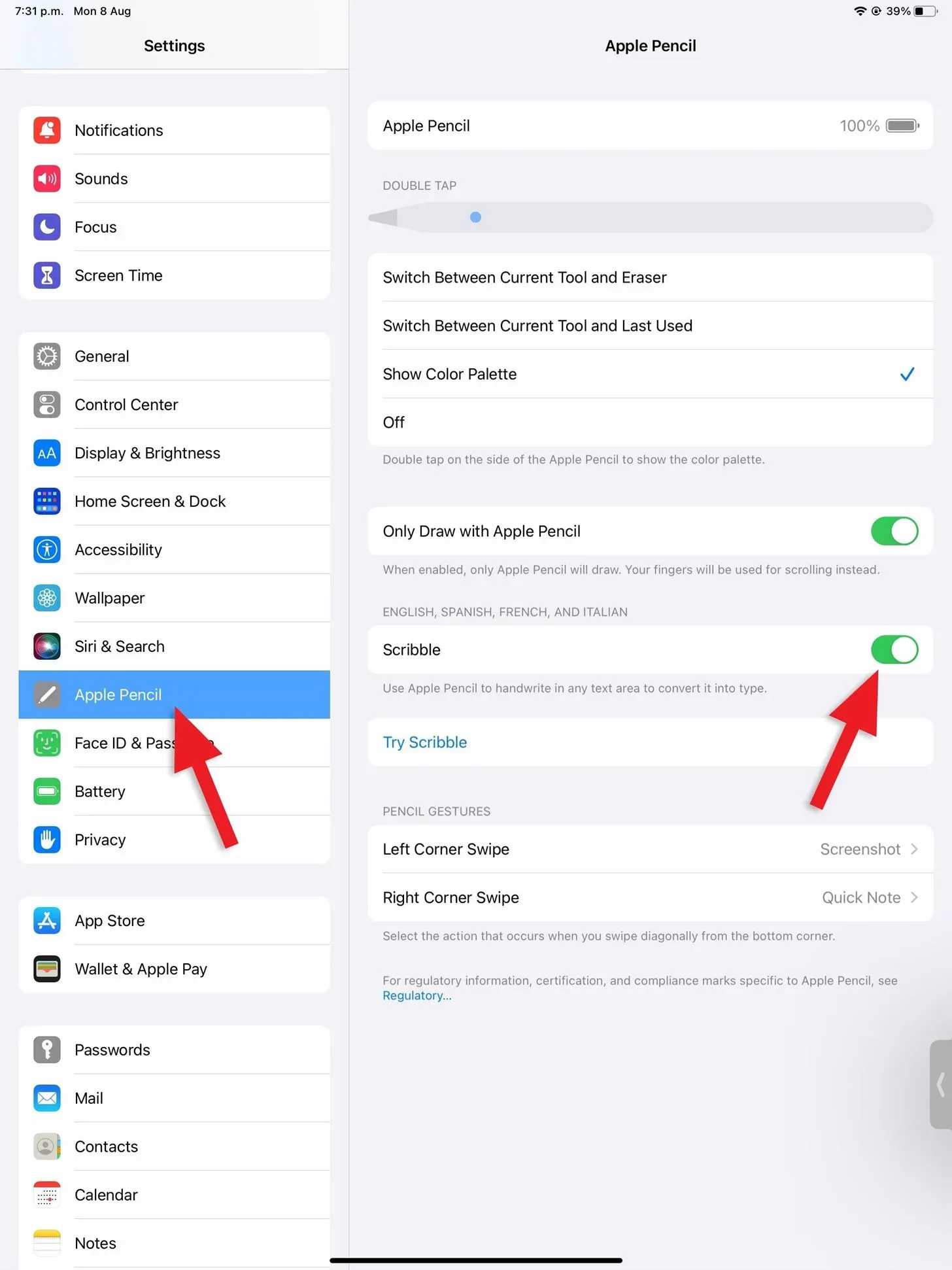
It should work by default, but if it doesn’t, go to Settings -> Apple Pencil and turn on the Outline toggle.
Tip 2: Select and Edit the Converted Text
You’re bound to make mistakes when using Scribble with your Apple Pencil to convert handwriting to typed text, but there are some easy ways to correct any mistakes. To try some of the ones listed below, go to Settings -> Apple Pencil, then click Try Scribble.
Text selection:
- Draw a circle around a word, number, phrase, sentence, paragraph, or entire page to make it stand out.
- Drag a line across a word, number, phrase, sentence, paragraph, or entire page to highlight it.
- Underline a word, number, phrase, or entire line to make it stand out.
- Double-tap a word or number to select it.
- Double-tap and hold a word or number, then drag in any direction to select more text.
- Triple-tap a word or number to select the entire paragraph.
- Drag the ends of the selected text to change the selection.
Text editing:
- Erase a word, number, phrase, sentence, paragraph, or entire page horizontally or vertically to remove it.
- Tap and hold on a text area to insert additional text, and write what you want in the open space before it disappears.
- Touch the text area to insert the cursor and write what you need.
- Draw a vertical line between symbols to connect or separate them.


Tip 3: Use the Double Tap Shortcut
The second-generation Apple Pencil has a hidden “button”on the flat side near the tip that can be double-tapped to perform a specific action. By default, the double-tap shortcut will switch between the current tool and the eraser, but you can go to Preferences -> Apple Pencil to select any of these options under the Double-tap heading:
- Switch between current tool and eraser
- Switch between current tool and last used tool
- Show color palette
- turned off
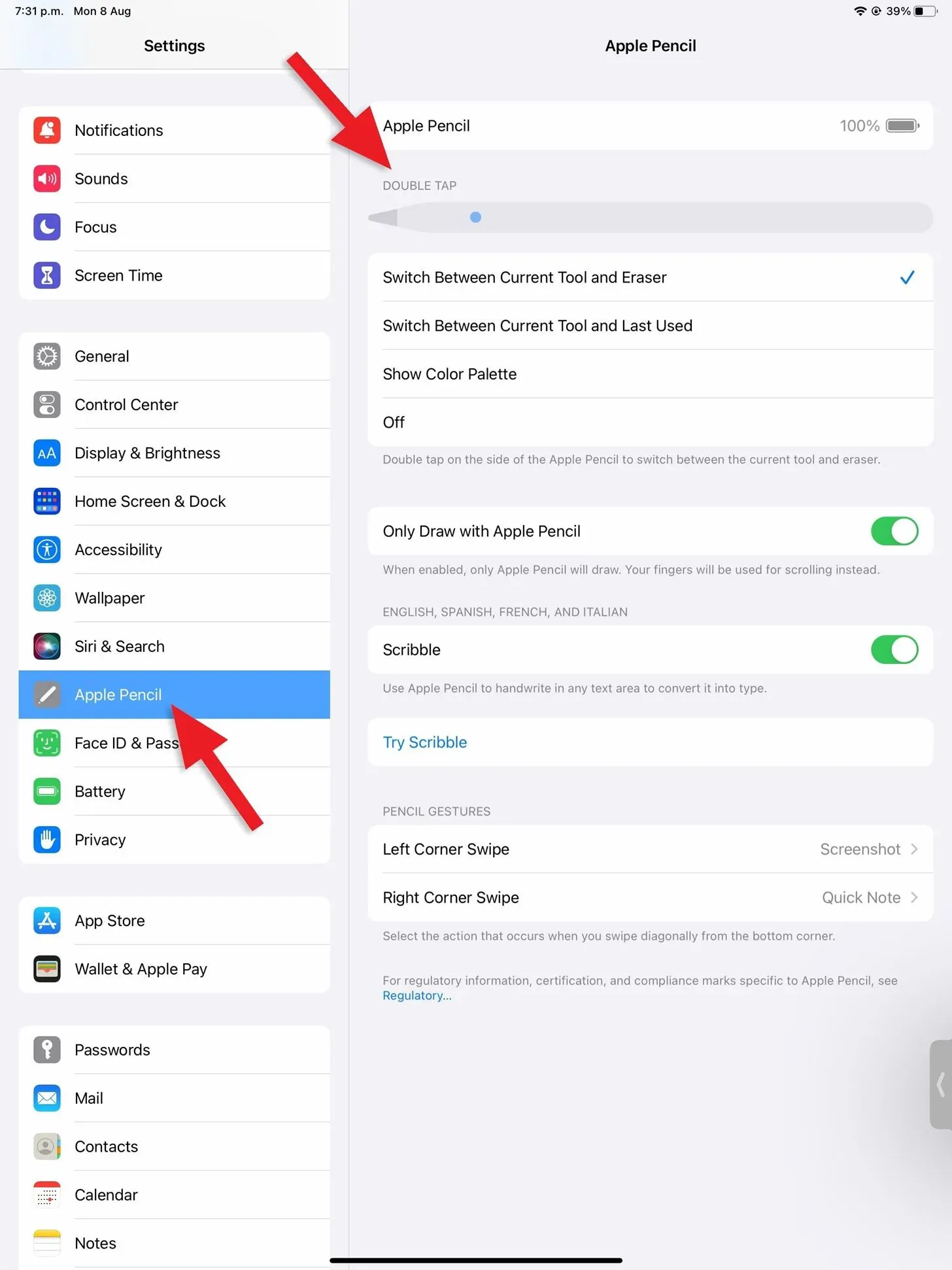
The double-tap shortcut only works in supported apps. It works great in Notes and you can use it anywhere you draw or use markup like Mail, Photos, Files, etc. Many third party apps also support it, like Procreate.


Using the double tap gesture in Notes (left) and Procreate (right).
Tip 4: Use corner swipe gestures
On iPad, you can swipe your Apple Pencil diagonally from the bottom left or right corner of the screen to perform a specific action. By default, swiping from the bottom left takes a screenshot, and swiping from the bottom right opens a quick note.
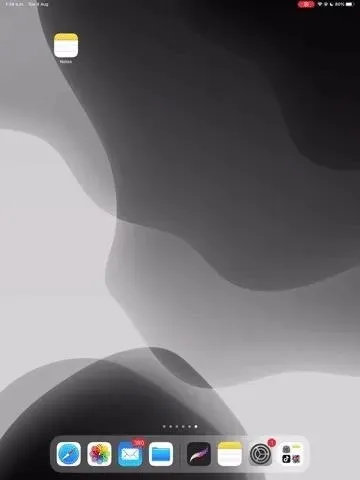
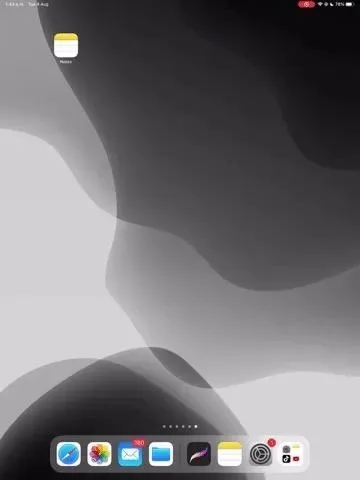
You can go to Settings -> Apple Pencil and then choose a different action for Left Corner Swipe or Right Corner Swipe under the Pencil Gestures heading.
Unfortunately, only the “Screenshot”and “Quick Note”actions are available, so the most you can do here is to switch actions or make any of the triggers do the same thing. You can also disable triggers entirely if you find yourself accidentally running them more often than you would like.
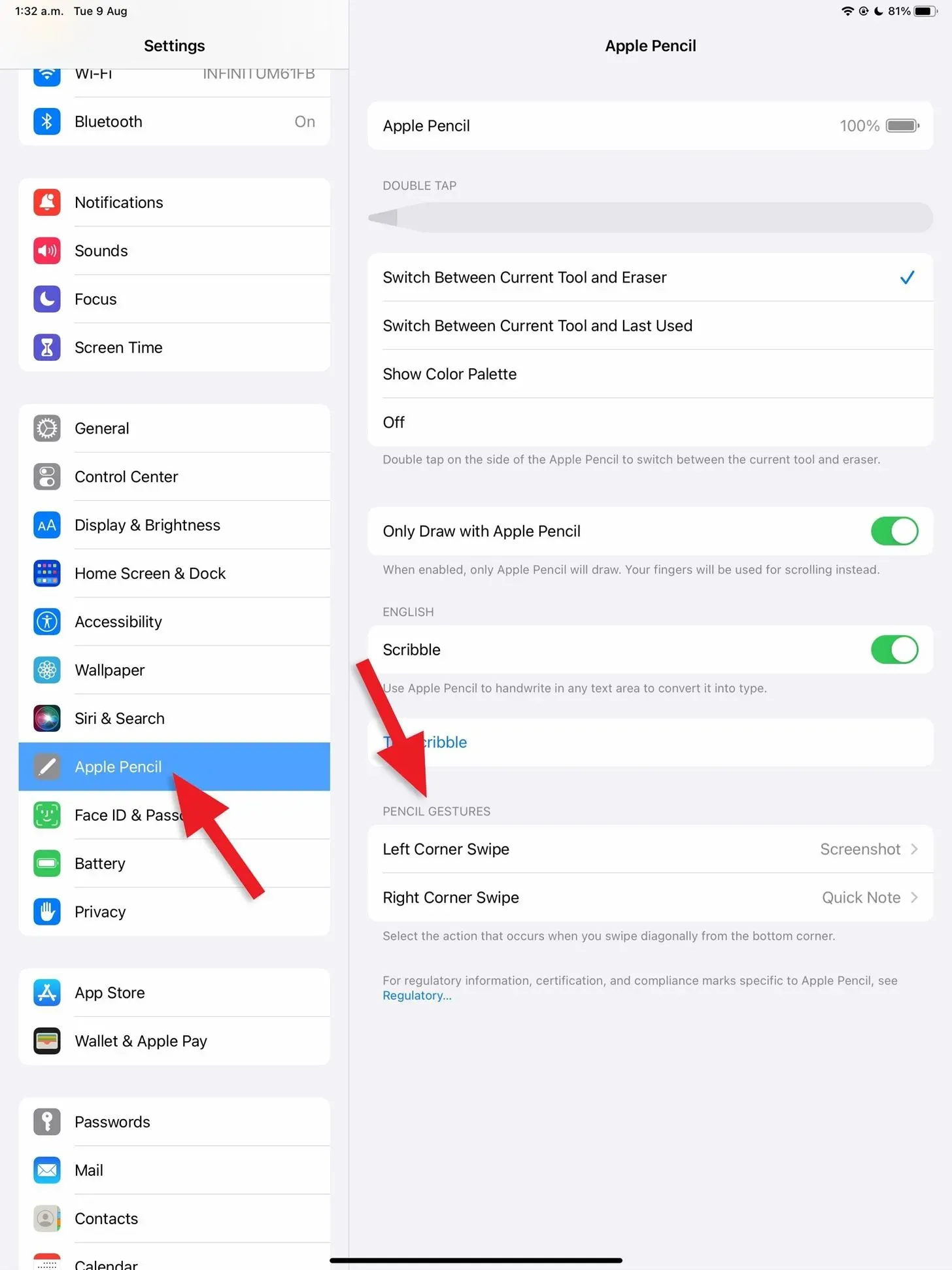

Tip 5: Customize the quick note gesture
If you like the quick swipe gesture in the corner, but don’t like how it resumes the last quick note instead of starting a new one, you can fix it via Settings -> Notes. In the Quick Notes section, toggle the Resume Last Quick Note toggle on or off.
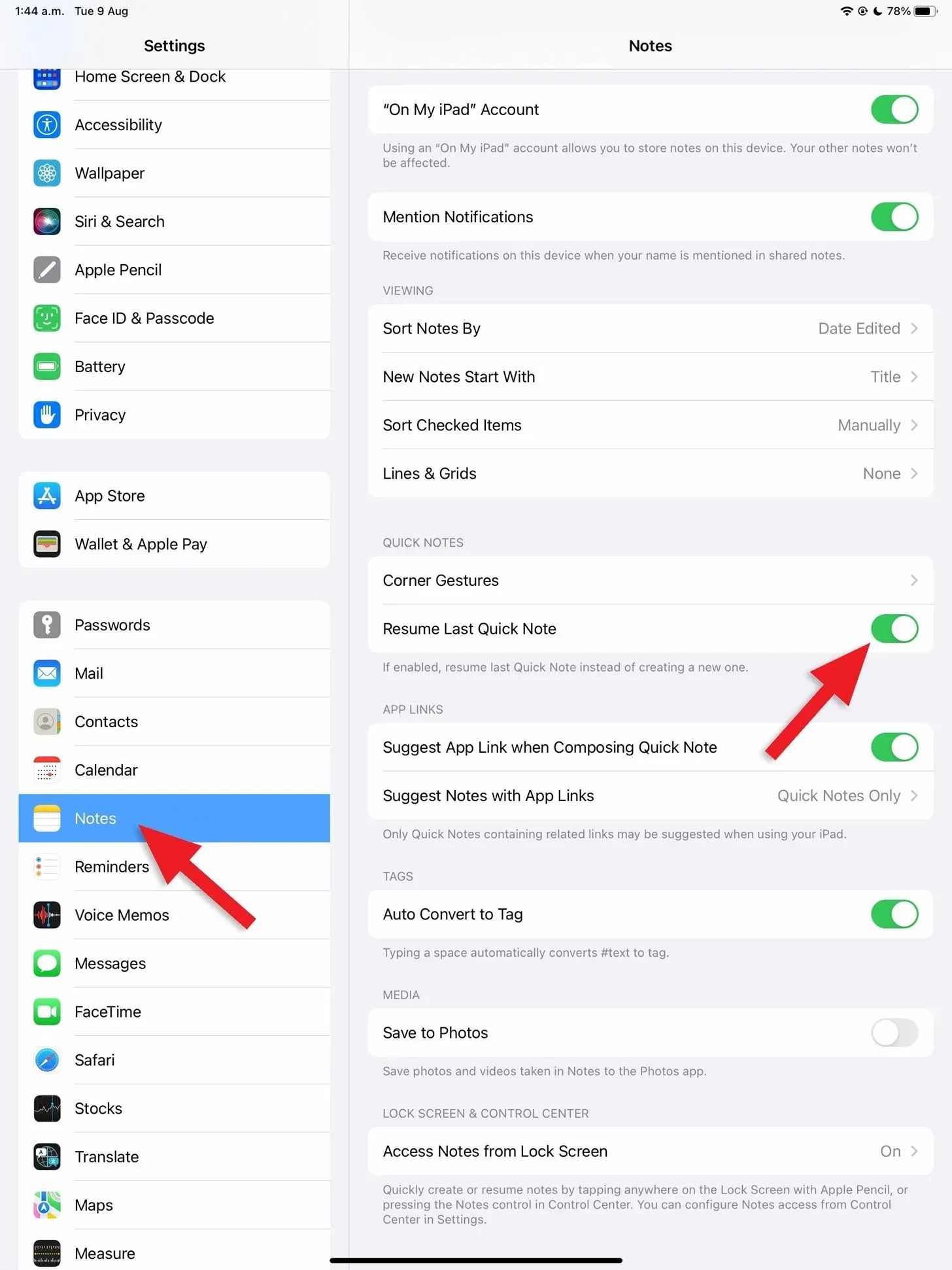
It’s also possible to open the Angular Gestures menu here, which lets you switch between the Capture Screen, Quick Note, or Off actions, just like you would in the Settings->Apple Pencil menu. The only difference is that you can also turn on or off the “Allow finger to swipe from corner”toggle. It should be on by default, but you can turn it off if you want it to remain an Apple Pencil-only feature.
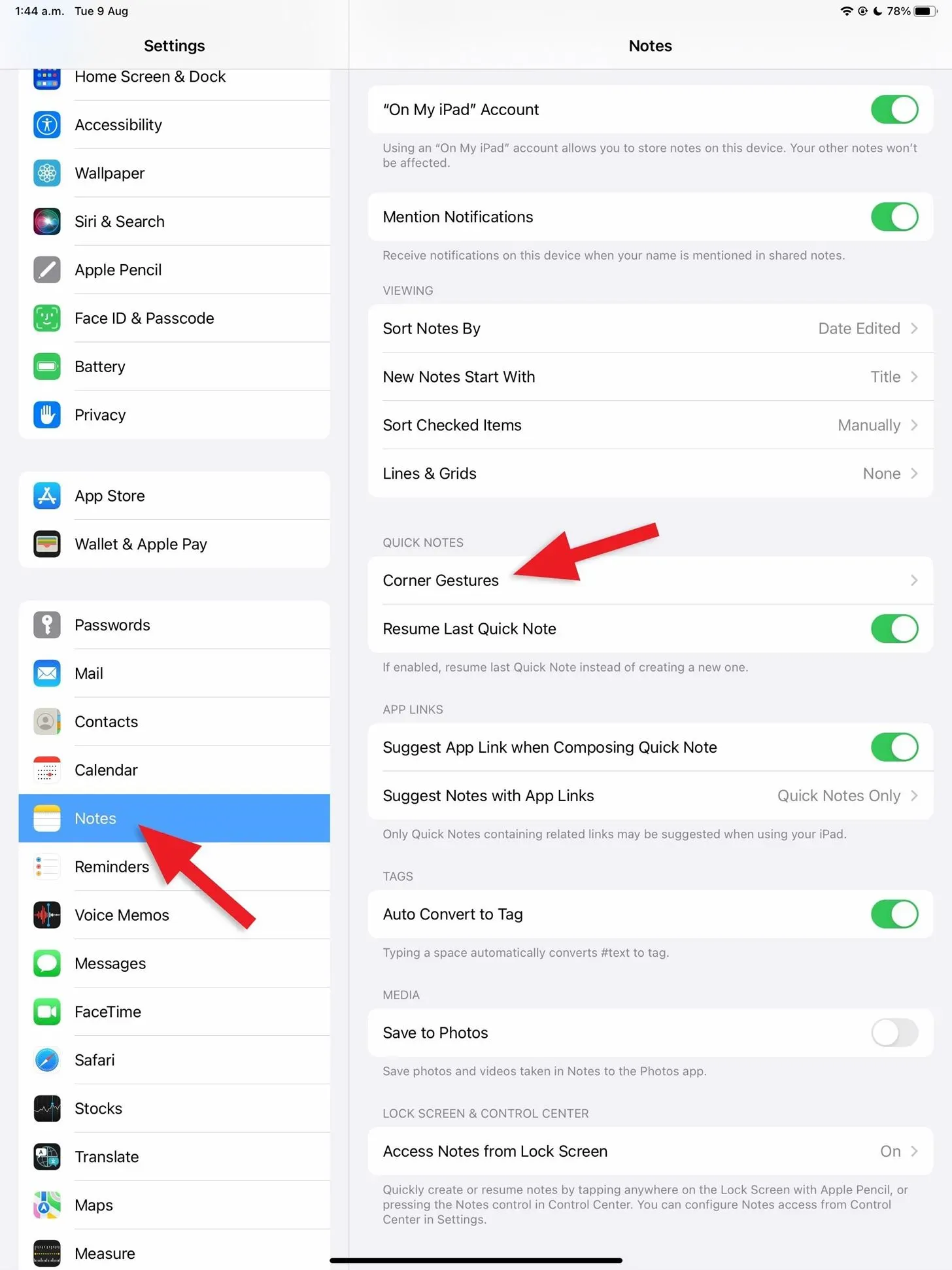
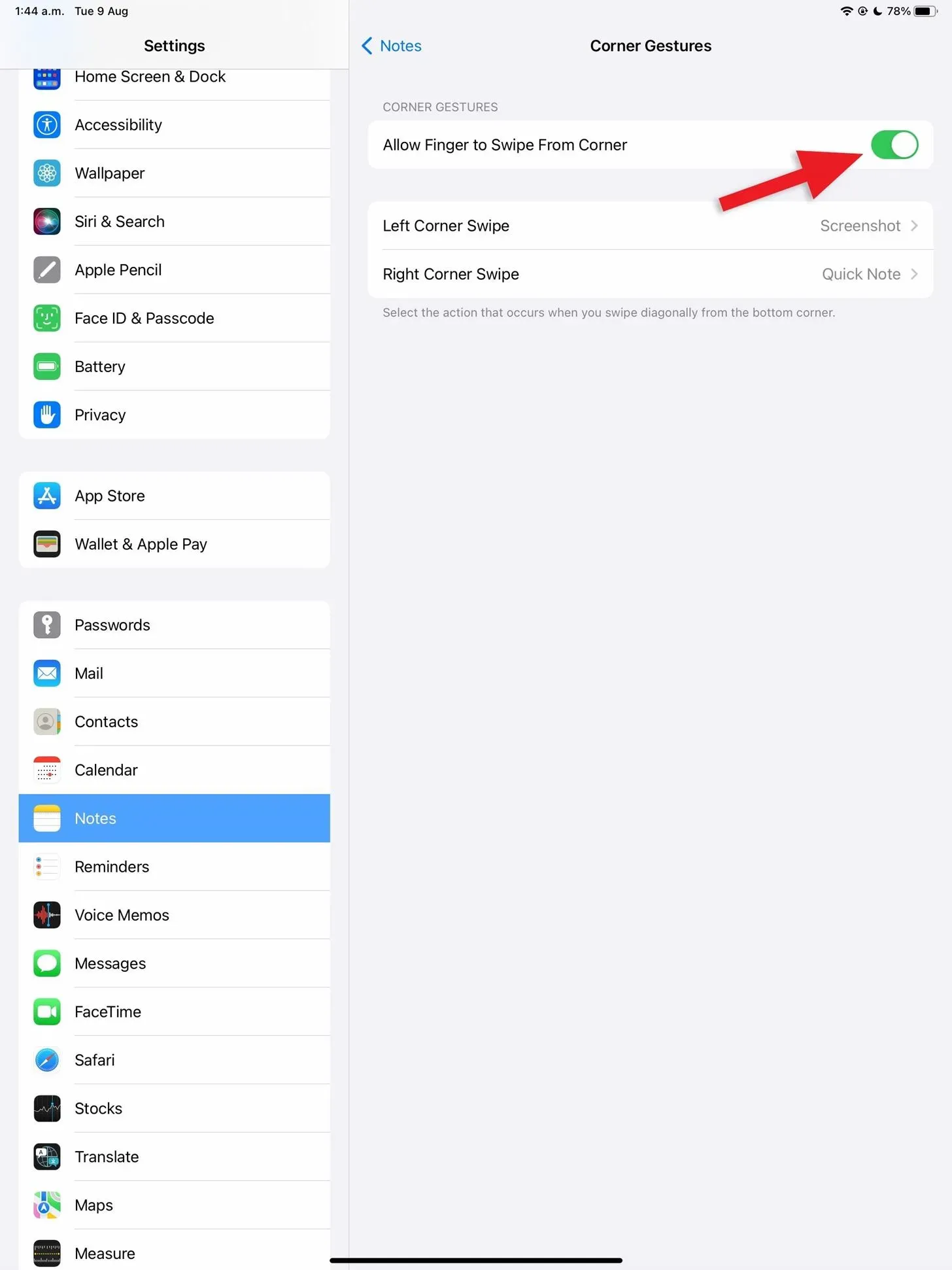
Tip 6Automatically Convert Handwriting to Notes to Text
The drawing interface opens instead of the standard Scribble tool when writing a note in the Notes app. If you start writing by hand right away, you may notice that it doesn’t automatically convert to typed text. This is because you have to make sure the correct pen is selected in the markup tools.
If you don’t see the Markup toolbar, tap the Markup icon at the top of the note. When it opens, make sure the pen with the letter “A”is selected. Then whatever you write in the drawing or sketch will be converted to typed text.
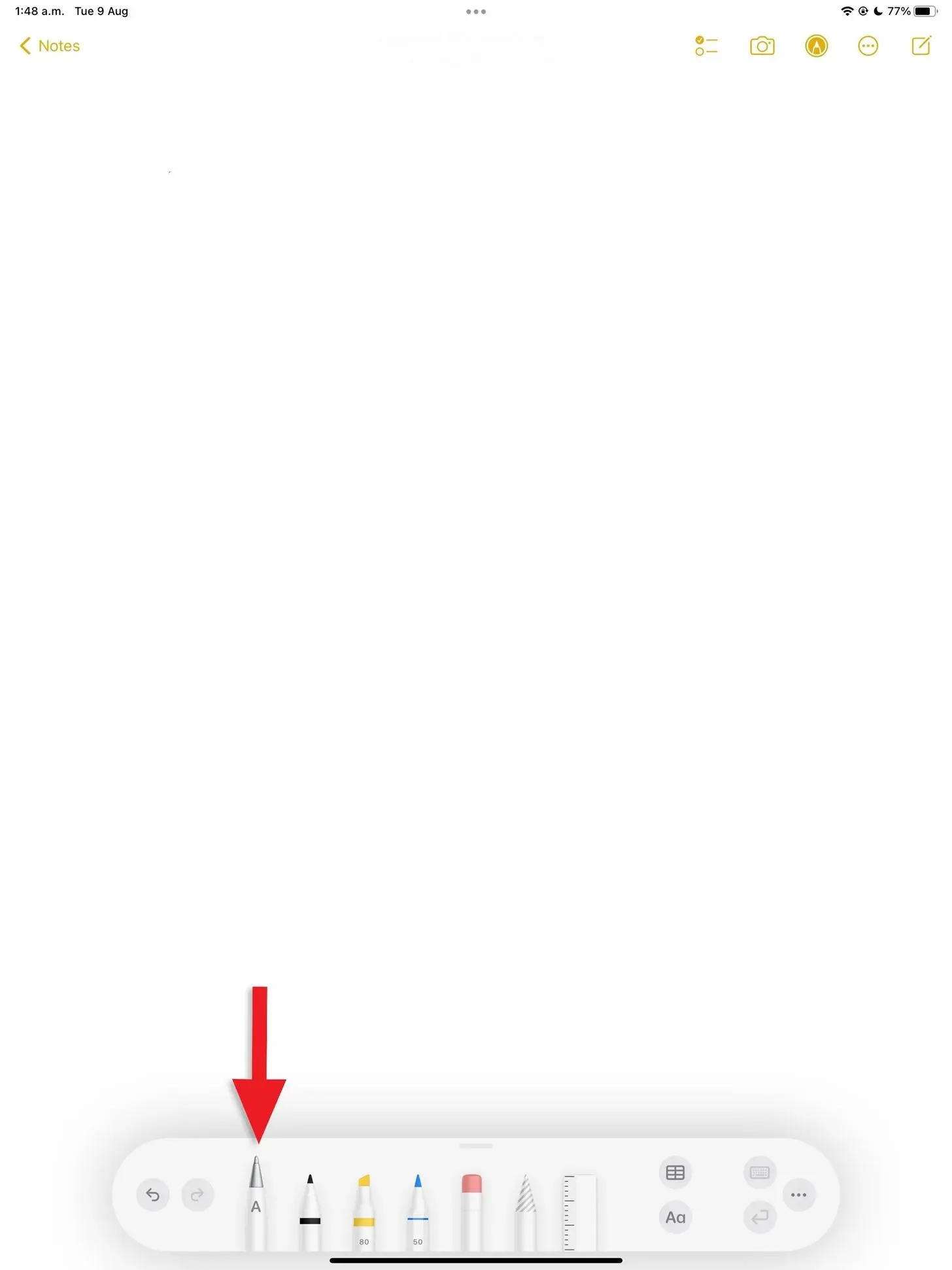

Tip 7: Convert already handwritten notes to text
If you already have a lot of handwritten notes in the Notes app and didn’t know that your Apple Pencil can automatically convert handwriting to typed text, you can change those old notes after the fact. First select the word, sentence or paragraph you want to convert. To do this, make sure the Markup toolbar is closed, then:
- Double-tap a word or number with your finger to select it, then drag the ends of the selector to expand the selection if needed.
- Press and hold a word or number with your finger to select it, then drag the ends of the selector to expand the selection if needed.
- Double-tap and hold a word or number with your finger, then drag your finger to select a different text on the screen. This allows you to skip certain words in a line, sentence, or paragraph.
- Triple-tap a word or number to select the entire line.
- Quadruple-tap a word or number to select the entire paragraph.
- Drag the ends of the selected text to change the selection if necessary.
If the context menu doesn’t appear right away, tap the selection to make it stronger, then tap Copy As Text, which will copy all handwriting as typed text to the clipboard. Finally, paste it wherever you want and it will show up as typed text.



Tip 8: Interact with underlined ink
If you have handwritten notes that contain identifiable data, such as dates, phone numbers, addresses, or email addresses, iPadOS will underline the recognized data.
You can tap the underlined data or press and hold it with your finger to open a menu with quick actions you can take. For a date, you can create an event, a reminder, or show it in the Calendar. The phone number will let you call it from your iPhone, add it to Contacts, send a message, or start FaceTime. And the address allows you to get directions, open it in Maps and add it to Contacts.

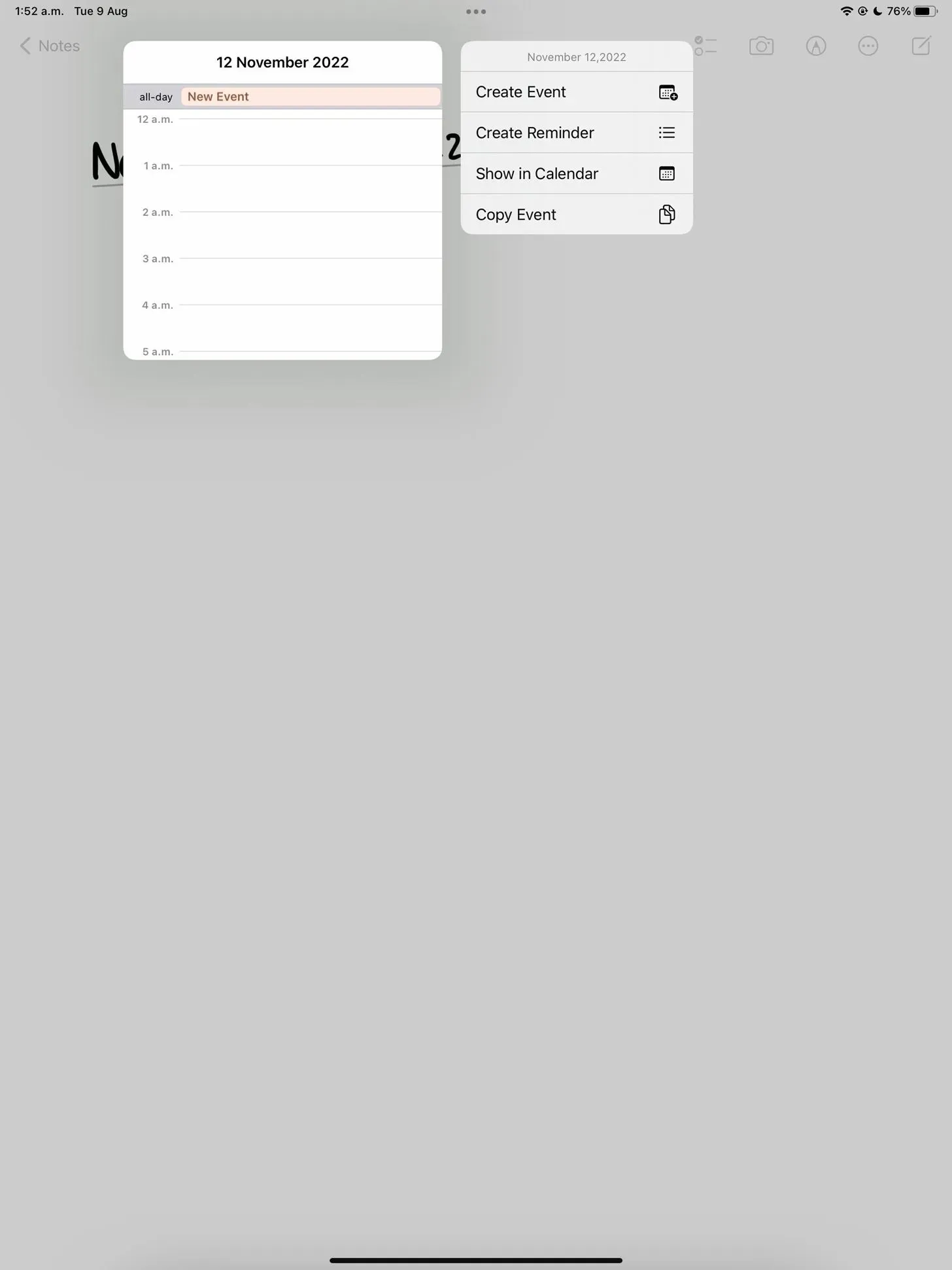
Tip 9: Annotate a Screenshot Instantly
After you take a screenshot with your Apple Pencil using the corner swipe gesture, the Screenshot Editor will open with the Markup toolbar already open, ready for you to annotate the image. If for some reason it doesn’t appear right away, you can still click the Markup icon to open the toolbar.
You can write by hand right away, but if you want to convert handwriting to typed text in the Screenshot Editor, click the plus (+) button on the Markup toolbar, then choose Text to add a text box to the image. Then, with the field selected, start writing by hand above the text field. You can also tap on the text box and choose Edit from the context menu to add text so you don’t accidentally overwrite what’s already in the text box.


Tip 10: Add a Signature
In the Markup toolbar, whether in a screenshot editor, note, PDF, or anywhere else, you can click the plus (+) button next to the color selector and then click Signature.
A pop-up window will appear asking you to add a new signature if you don’t already have one in the file; Sign your name with your Apple Pencil and click Done to save. You can now revoke this signature at any time in Markup Tools, whether you’re using an Apple Pencil or not.

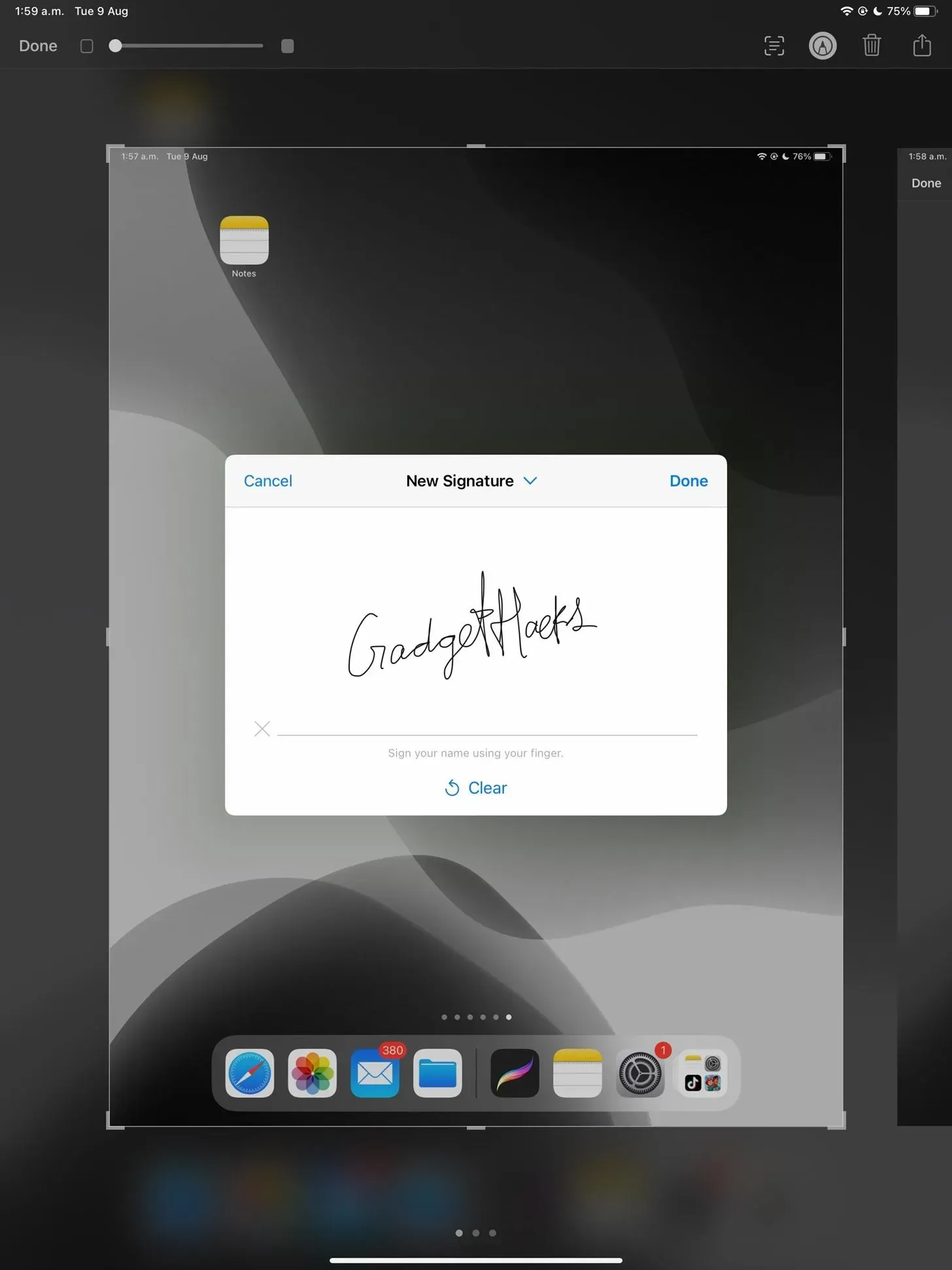
To add or remove signed names, click Add or Remove Signature after opening the Signature option in Markup.

Tip 11 Write a note from the lock screen
Whether your iPad’s screen is active or sleeping on the lock screen, you can tap Apple Pencil on the display and start writing a note that will be saved to the Notes app. It always creates a new note by default, but you can customize what it does via Settings -> Notes -> Access Notes from Lock Screen. Here you can choose between “Off”, “Always create a new note”and “Resume last note”.
You can also tap the Notes control in Control Center, but corner swipes won’t open a quick note from the lock screen like they would anywhere else.
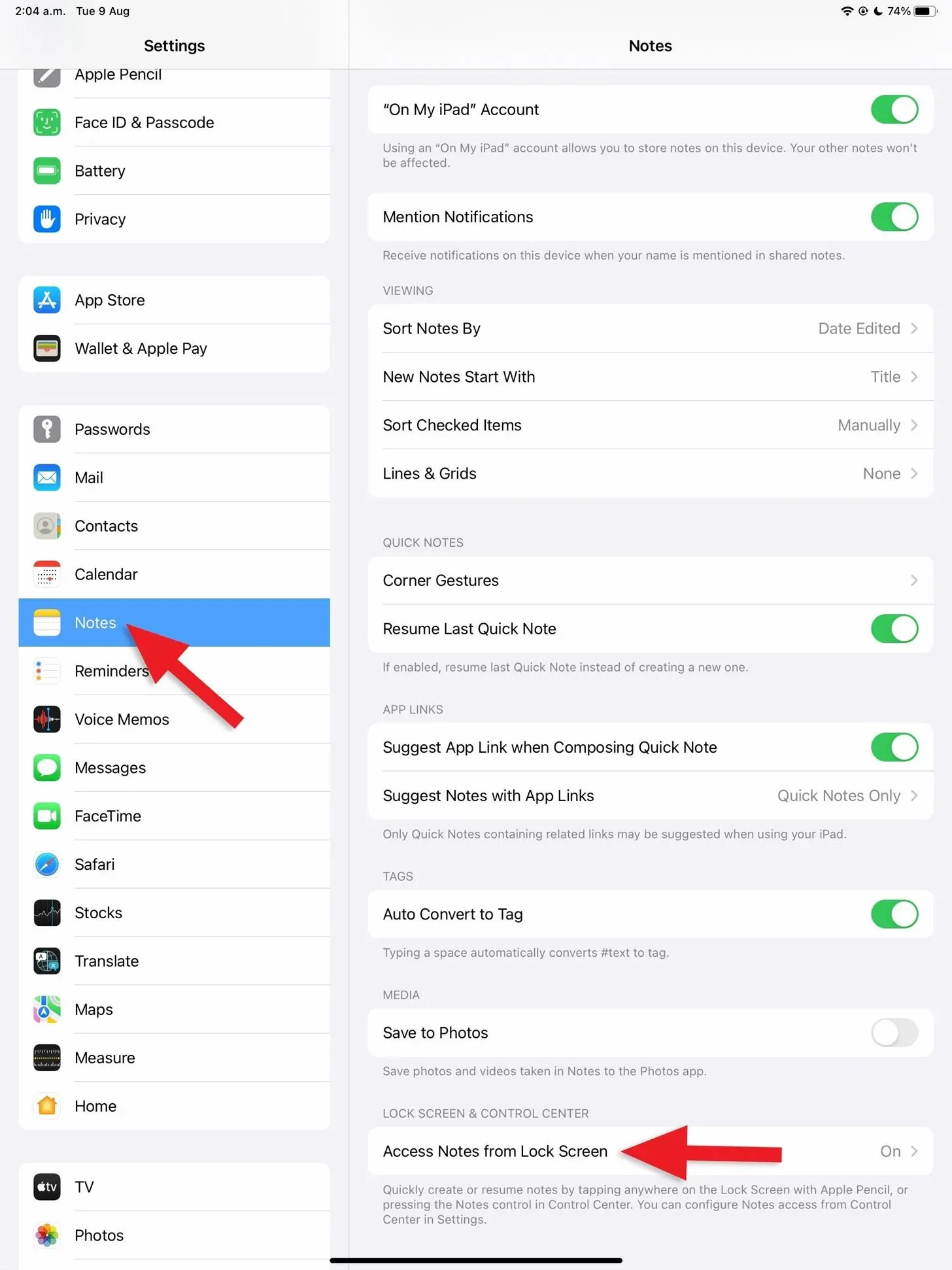
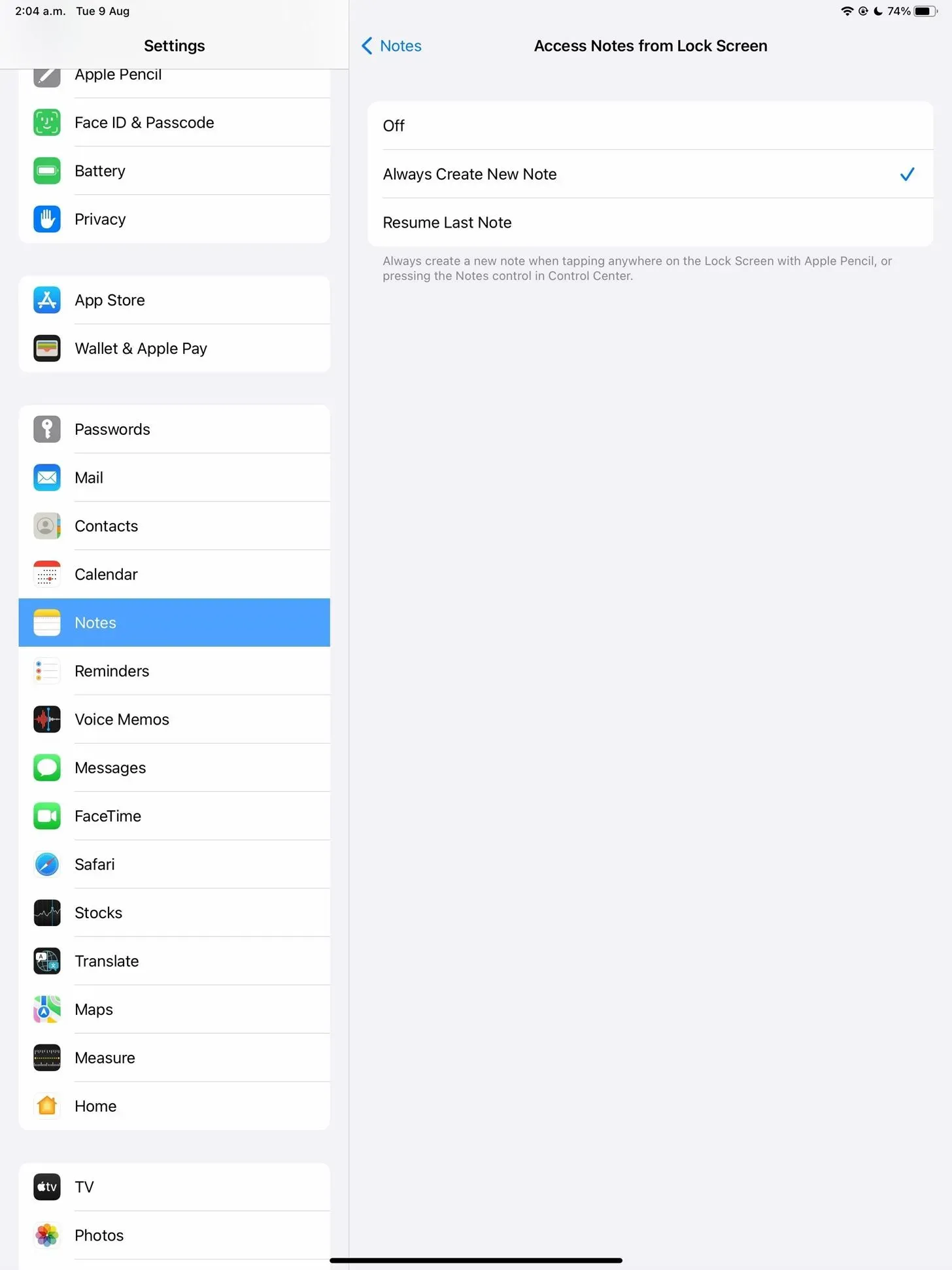
Tip 12: Draw pictures in emails
While you can handwrite with your Apple Pencil in a draft email and have it automatically converted to typed text, you can also sketch drawings in a draft email. In your draft, tap the Markup icon in the toolbar, then draw a sketch with your Apple Pencil on the canvas. Click “Done”when you’re ready, then “Insert Picture”to place it in your draft.



Tip 13: Keep track of how much battery is left in your pencil
The easiest way to see how much battery is left in your Apple Pencil is with the Batteries widget, which you can add to your Home screen or Today view. Press and hold anywhere on the home screen; Once the home screen editor opens, press the plus (+) button to see the widget gallery. From here select “Batteries”and add the widget you like best.
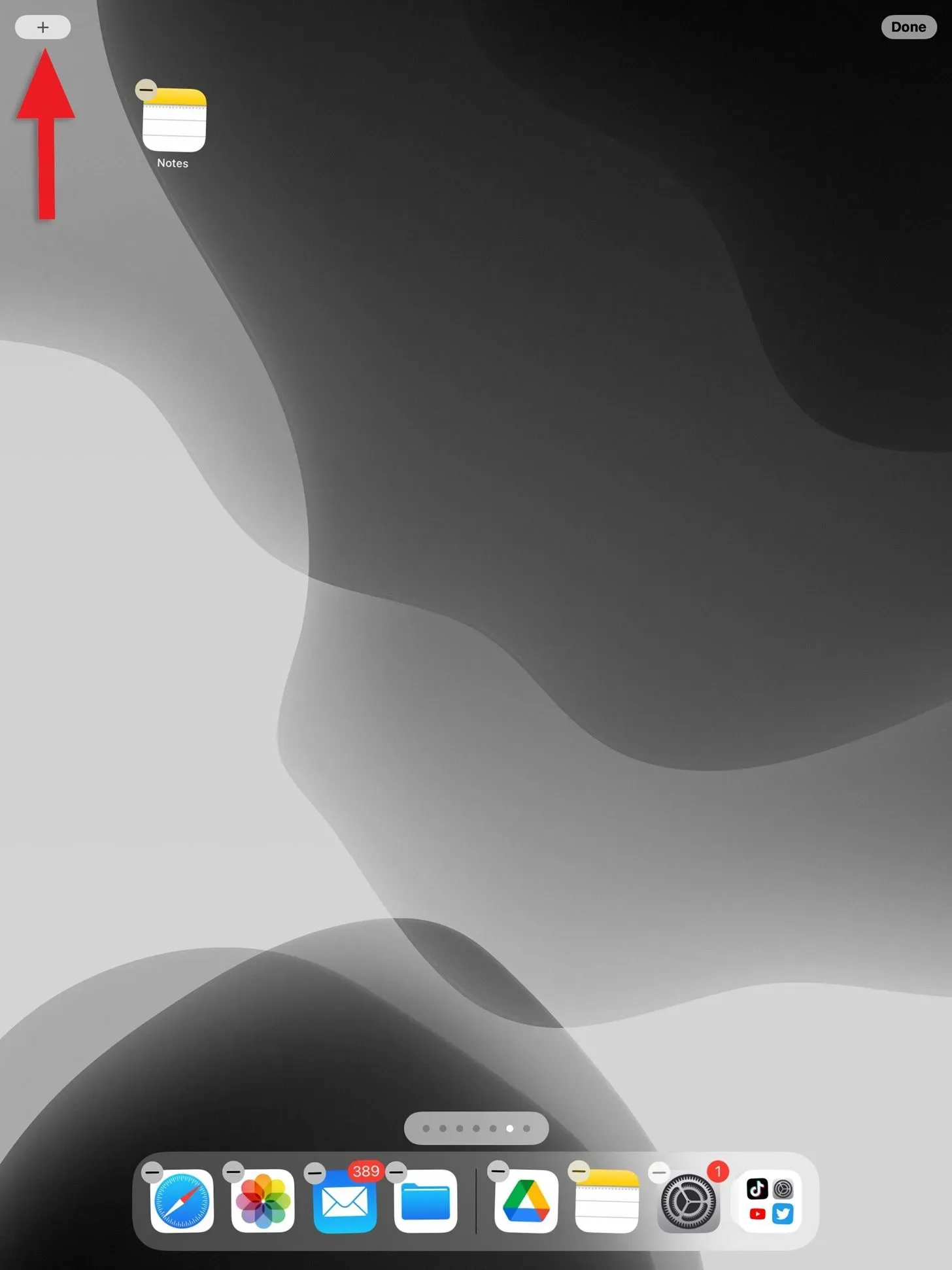


If you don’t like widgets, you can go to Settings -> Apple Pencil and you will see the current battery percentage at the top of the screen. In addition, whenever you attach a second-generation Apple Pencil to an iPad for docking and charging, a warning about the Apple Pencil’s current battery percentage is displayed on the screen.

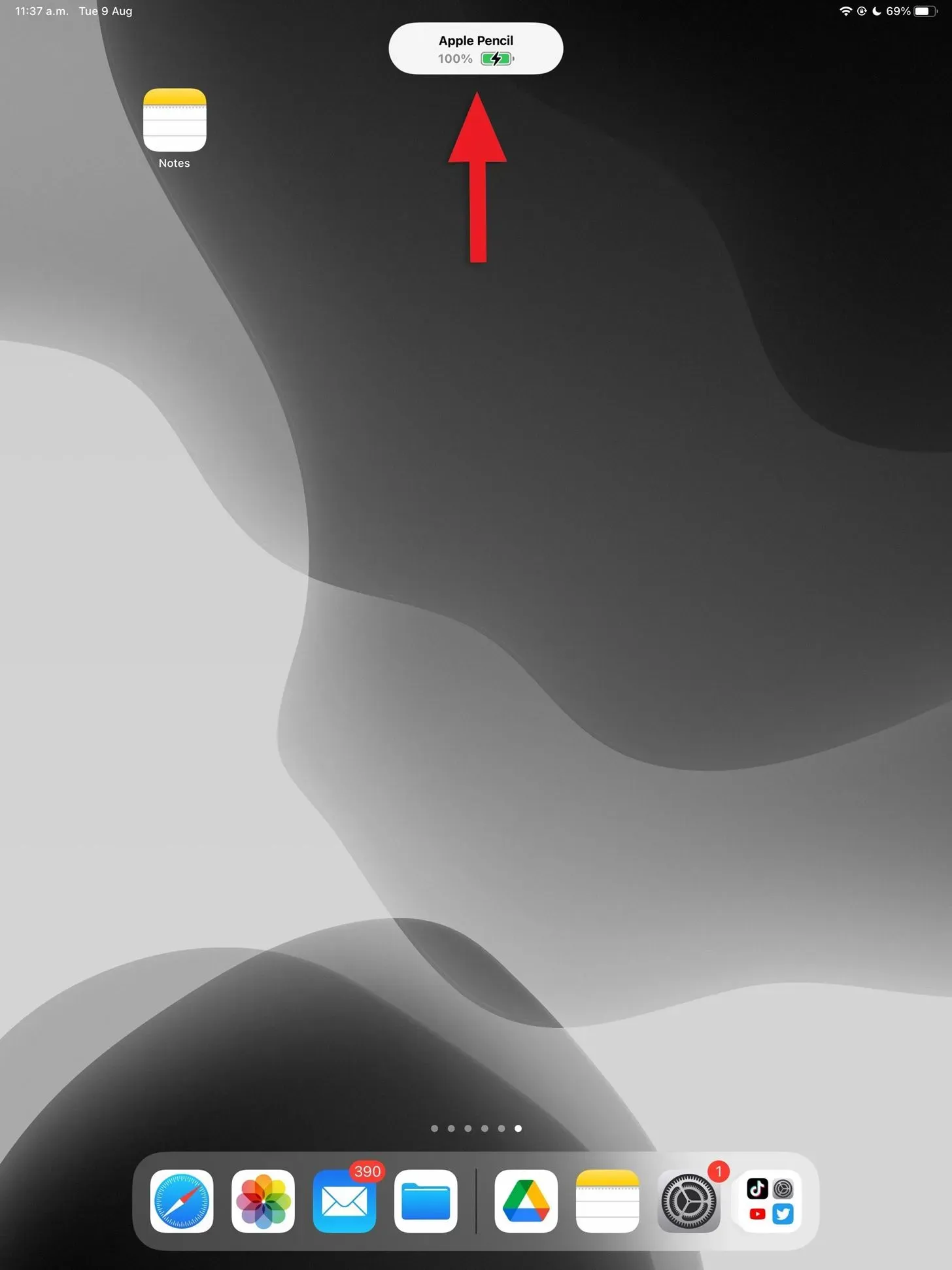
Bonus tip: swipe to undo or redo
In most apps, including Notes, Pages, and Numbers, if you make a mistake with your Apple Pencil, you can click the undo button in the Markup or Outline toolbar to go back and try again. However, you can use multiple finger swipes instead, which can be faster.
For example, a three-finger swipe to the left undoes last strokes, while a three-finger swipe to the right repeats strokes. And it works for anything — not just undo and redo strokes on the Apple Pencil — so you can also use these gestures when writing notes with the keyboard.
- More information: How to undo and redo input with swipe gestures on iOS and iPadOS
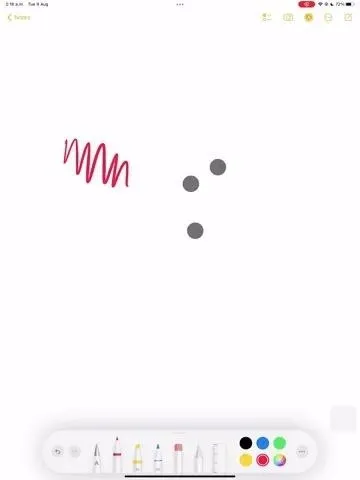
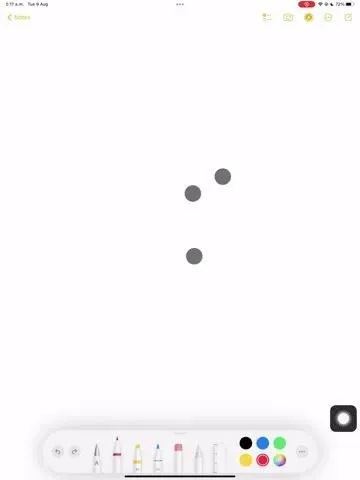
(1) Swipe left to undo. (2) Swipe right to redo.
* Compatible languages
The following languages are compatible with Scribble when copying handwriting to text and when interacting with data detectors.

